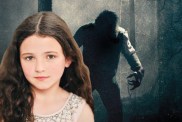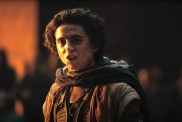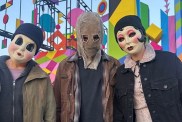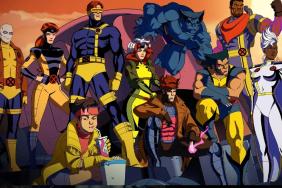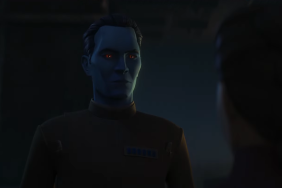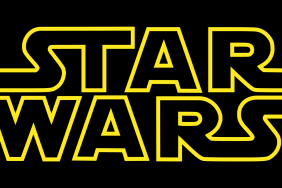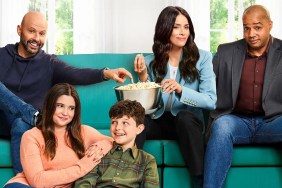Dave Filoni talks Rebels season 4 influences and the allure of live action
Star Wars Celebration 2017 was a bittersweet one for fan-favorite creator Dave Filoni. The popular animation director was able to assemble the cast of his hit series Star Wars Rebels in front of a crowd of thousands of fans to tell them about the upcoming season, but also had to reveal to them that it was the final one for the show. We caught up with Filoni after the panel to talk about how he works in such an expansive franchise, his temptation by working in live action, and even how King of the Hill lead to Star Wars Rebels.
ComingSoon.net: One thing I’m always really fascinated to talk to people about is taking a live-action franchise and putting it in another medium and how some have the tendency to say, “we’re not limited by budget and all these things so let’s do whatever we want,” and some want to preserve the aesthetic of the franchise. So I wanted hear your take on that.
Dave Filoni: Well, I’ve never met anybody in this field that says they’re not limited by budget, that would be amazing. I think the challenge in our field is you are limited by budget, but who cares? You have to be creative and solve the problems within the budget and make it as great as it can be. The budget is the function of creativity here, it’s never a limiting thing, it just tells you how creative you’ve got to be. For me the goal on all the animated series that I’ve done is just to make them feel like they’re a part of the films. We might be able to do something stylistically that’s different, so I don’t really worry about photo realism but I do worry about the look of it stylistically, that we don’t take Star Wars in a direction that’s not authentic to it; so we use a touchstone of it like Ralph McQuarrie and say “It should FEEL a bit like that,” and then we evolve the style from there. I think that’s truly important. Something that’s this, the 40 year anniversary with a global fandom, there are things you expect from a Star Wars story, it’s true from the look of it to the tone of it, and I try to sit inside this as best I can, but I would never try to grossly change it or make too many concessions. But Hondo Ohnaka wears a different outfit in this show than in “The Clone Wars,” which is a function of the story and the budget, so it’s just little differences like that. As far as the story goes it shouldn’t be noticeable.
CS: Building off of what you said of keeping it still in that same space of the franchise, we saw in the trailer the scene of them riding this big wolf, which to someone that maybe is not as familiar with the cartoons and maybe just the movies might see that and think “That’s not Star Wars,” but there’s constantly giant animals…
Filoni: There’s always giant animals. There’s Dewbacks, there’s bizarre creatures and if you look closely they’re not straight-up wolves. Star Wars creatures are never really that tremendously bizarre and different. There’s a tendency now with the opportunities of CG to make things completely bizarre. A Dewback doesn’t really feel like anything much different than a big lizard, really? And a Bantha wasn’t something completely foreign to us, you could almost believe it was a real thing. I know stuff like that can be challenging, but it’s not just the visual of it, it’s how it fits in the story, what role it plays. I think when you look at something like a wolf and what it represents, even in our own world and reality it’s a challenging animal. There are people that love it and people that hate it and try to destroy it, people that try to protect it, so there’s a lot of similarities there to the Force and the light side and the dark side, and I find all that kind of interesting.

CS: I want to go back to the fight scene between Obi-Wan and Darth Maul and I love its simplicity, not how quick the fight itself is but how the scene itself is constructing around just these two characters in a scene and it’s very much like Kurosawa, and that was something George was playing with in the original movies. How often are you talking about those things that he was playing with then with the things you’re making now?
Filoni: It’s always in my mind. Working with George like I did, I really respect him and appreciate everything he taught me and I think that he gave me certain concepts and clues as to how this all works and what makes it special and what keeps it special. Something that’s just inherent in Star Wars is a love of film, a love of stories and storytelling and serialization. Kurosawa was something George deeply respected, and he worked with him, I wouldn’t use those things lightly but it seemed like an appropriate moment for that respect and usage of imagery. It felt right, it was the right place for it, but it’s always going to be an influence. Again, I can’t say enough, I’m not here to change Star Wars, I’m not here to make my version of Star Wars. I’m here to keep telling the story as authentically as I can.
CS: Another thing I love to talk to filmmakers and creatives about is the movies that maybe they take a kernel of an idea from there and expand on it in their work. The example I like to go to is I talked to the Russos on the set of Civil War and I asked them that question and the movie they kept talking about Se7en and at the time we thought “What does this mean?” but when you see the movie you say “Yes, of course it’s Se7en!” Are there any movies people wouldn’t guess are influencing you?
Filoni: There’s always a bunch. I think as a visual storyteller you’re always inspired by what you see other people doing and it effects you. Definitely in season four I was effected by the way the film “Close Encounters of the Third Kind” makes me feel. Some of the imagery and wonder that it portrays. I’m always influenced, as you can see by this first episode if you saw it, “Indiana Jones and Raiders of the Lost Ark.” Obviously that’s a truck chase moment, but it goes beyond that, it goes more into some of the wonder you see and the real question of this mystery about an Ark and an object, so I get some influence there. I love Carroll Ballard’s film “Never Cry Wolf,” which is one a lot of people aren’t familiar with, but it was a big movie for me growing up, so obviously it’s pretty easy to see the influence it might have had, and if you know the book by Farley Mowat, you know that it’s an influence. These are my experiences, I have some things in my own personal life that effected this season that I wrote to and I think really helped shape what goes on here, and allowed me to understand a deeper meaning for things that I didn’t understand before. I think all in all it’s a great season but you’re always effected by the movies around you. Every time I see what the other guys are doing, Rian (Johnson) and “The Last Jedi.” I love that opening shot of the trailer, it’s magic from me. It’s nice to draw inspiration even from the people working around you.

CS: You mention The Last Jedi, and there’s always fan chatter, they always want to know the next thing…
Filoni: Yes, they do.
CS: Even though they don’t have the thing that’s coming…
Filoni: Dessert before dinner.
CS: There seems to be a lot of people that have a desire for you to grab one of these standalone Star Wars movies, is that something you’re interested in or do you like the animation side?
Filoni: I’d be crazy to say I’m not interested in that. I don’t want to say that would be the ultimate, because I really enjoy the stories I’m telling now and I would never undercut them by saying they’re something less. I think the craft we do and the work we do in these series is tremendous and the artists we have working on them are amazing. But I can’t help but be curious about this live-action world and what I see there and the tremendous opportunities that are around me. It is very interesting to me, I respect the craft that it is, it’s a different style. I’ve been observing and learning a lot about it to see how I would do (it) and if it fits with my creative vision for things or would I encumber the process. I don’t do things like that unless I feel like I do have a real ownership and mastery of it, I just think it’s disrespectful to the crew that you would work with, who would obviously been tremendous professionals and I wouldn’t want to hinder them in any way. You know, we’ll see. In some circles you find you’re a master and in some circles you’re still a Padawan, we should always be learning, all of us. Always be learning.
CS: Before I let you go, I read online that you worked on King of the Hill.
Filoni: I did!
CS: Which is one of my favorite things. I don’t know if you can hear it but i’m clearly Southern.
Filoni: So that really connected for you?

CS: Completely. I just want to hear what it was like working on King of the Hill.
Filoni: It was a great experience. I really have to say that it helped in the long run, to shape where I got to, because at Film Roman on “King of the Hill,” I was surrounded by a lot of people that had worked on “The Simpsons” and had been on “King of the Hill,” so they’re incredible professionals in the animation industry. There is so much artistry that goes into that show. Mike Judge is an incredible writer, gave us incredible material to work with, but the directors and the animation people and story people I worked with I was able to learn a lot in a very short amount of time, and they’re lifelong friends. I still have people that I work with to this day that I met in that first year of my career. I was able to do character layout, I was about to do story boarding, I was able to become an assistant director, I was able to go visit the prop designers, the set designers, the background designers and just learn all about it, so it was a really valuable lesson.
You don’t think you go to art school to sit and draw four guys drinking beer by the side of a fence but then you find there’s a lot of artistry that goes into that. Also the way “King of the Hill” is shot you think of more like a three-camera television system, but I was able to do an episode where Hank visits the Dallas Cowboys training camp and I wanted to shoot that a lot more like the movie “The Natural.” So when I did the storyboard I thought when Hank picks up the football in the middle of the field, we’re in his head and in his head it’s this Roy Hobbes moment, and everybody loved that, and I think that’s where early on you get a glimpse of “I want a bigger frame and a bigger screen,” even on “King of the Hill” I want to play these ideas out. It was a wonderful experience, I really love it and the people that I worked with there. I worked with Mike DiMartino on “King of the Hill” and he later went on to create “Avatar: The Last Airbender” and I got a job on “Avatar” because we had a relationship, then I got taken off “Avatar” and put on “The Clone Wars.” So you never know where you start out where it’s going to lead.
CS: It all comes back to King of the Hill.
Filoni: It does oddly. I still have a maquette from that show that we have in my office up at Lucasfilm. (Editor’s note: Filoni begins speaking like Hank Hill from the series) “Dangit ya sit there and ya talk like these characters cause ya have ‘em in yer head all day.” You just can’t help it, they’re wonderful, wonderful characters. All of them.
